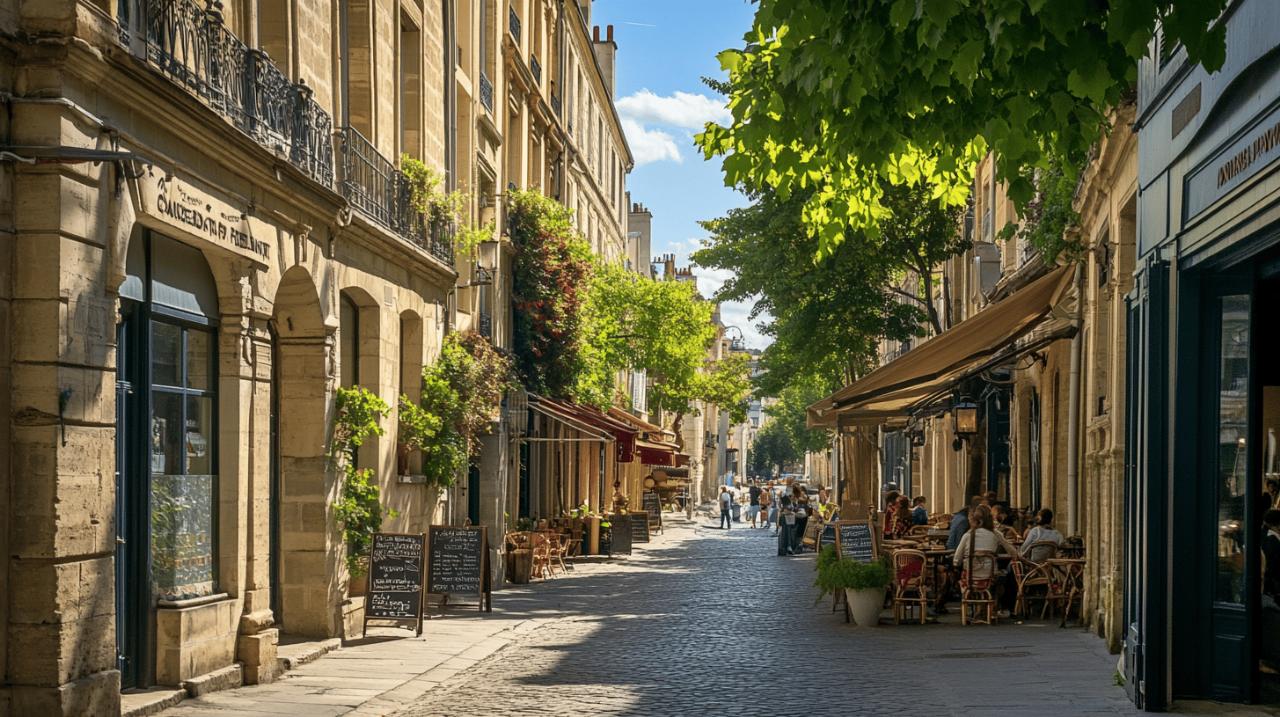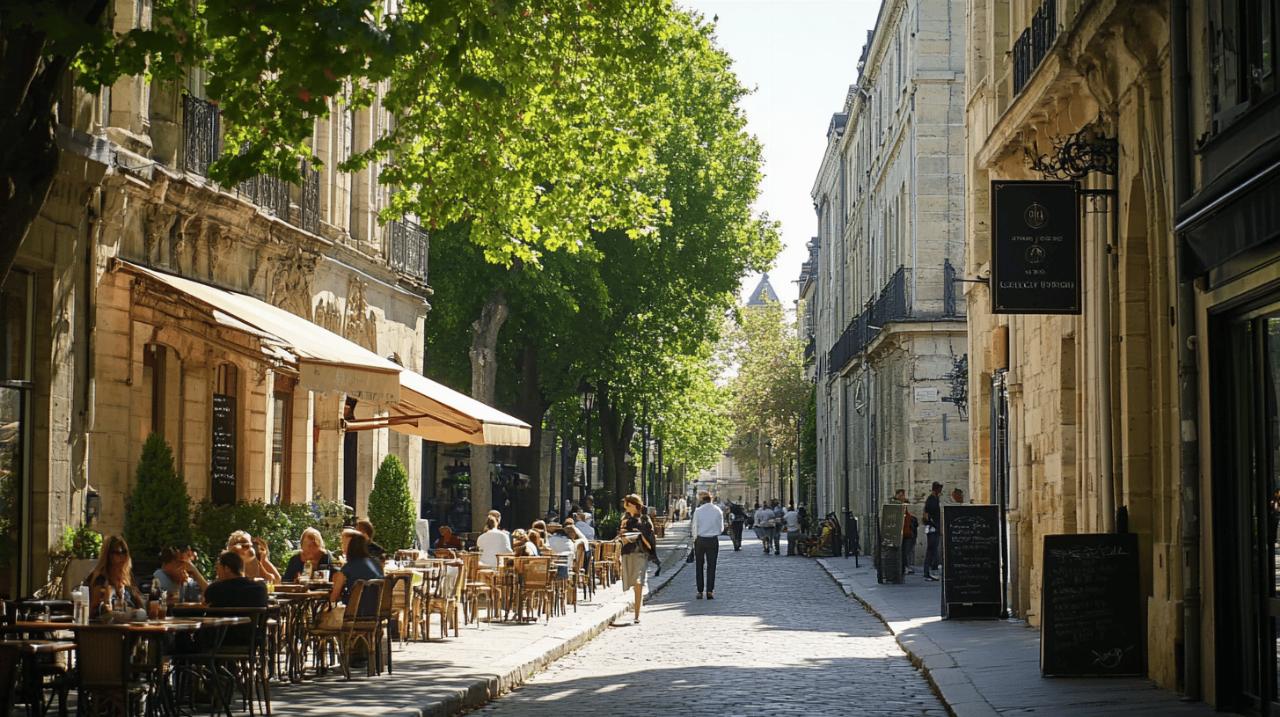Exploring bordeaux’s quartier jardin public/saint seurin: the ultimate architectural itinerary through the ages
As you venture into Bordeaux's enchanting Jardin Public/Saint Seurin quarter, you'll discover a veritable treasure trove of architectural wonders spanning several centuries. This charming district offers visitors a perfect blend of verdant landscapes, historical monuments, and aristocratic mansions that tell the story of Bordeaux's rich heritage. Our carefully crafted itinerary will guide you through this captivating neighbourhood, revealing its most splendid attractions and hidden gems.
Marvelling at the Historic Jardin Public: Bordeaux's Green Jewel
Begin your journey at the magnificent Jardin Public, the oldest green space in Bordeaux dating back to 1756. Considered the very soul of the city, this 11-hectare oasis offers a countryside atmosphere right in the urban centre. Since 1746, this beloved 'greenlung' has been providing locals and visitors alike with a tranquil escape from city life. The park blends stunning 18th-century architectural elements with a relaxed setting featuring a serene pond and majestic old trees that provide welcome shade during warm summer days.
The English-style landscape and botanical collections
As you stroll through the garden's winding paths, you'll notice its thoughtful English-style landscape design that creates numerous picturesque vistas. The Jardin Public has earned the prestigious classification as a 'Remarkable Garden of France' due to its exceptional botanical collections and historical significance. The garden is framed by elegant townhouses that reflect the wealth and taste of Bordeaux's past aristocracy. Multiple entrances allow visitors to access this green haven from various points, including Cours de Verdun, Place Bardineau, Rue du Jardin Public, Place du Champ de Mars, and Rue d'Aviau.
The Natural History Museum and children's playground
Within the garden grounds, you'll find the fascinating Natural History Museum, housed in a beautiful building that adds to the garden's architectural charm. Families will appreciate the well-equipped playground where children can enjoy themselves while parents relax nearby. A true cultural highlight is the historic Guignol Guérin puppet theatre, founded in 1853 and holding the distinction of being the oldest puppet theatre in France. These delightful performances were once a form of television news, with marionettes carved from limewood or cherrywood enacting stories based on everyday life that entertained both children and adults. For those seeking refreshment, the garden's restaurant 'L'Orangerie' offers delightful meals in a picturesque setting.
Saint-seurin basilica: a unesco treasure of romanesque design
A short walk from the Jardin Public brings you to the magnificent Saint-Seurin Basilica, a UNESCO World Heritage Site since 1998. This architectural masterpiece dates back to Gallo-Roman times, with the main structure being built in the 11th century. The basilica stands as a testament to Bordeaux's deep historical roots and religious heritage. Its Romanesque design showcases the architectural brilliance of medieval craftsmen, with its imposing façade drawing visitors into a world of spiritual and historical significance.
The ancient crypt and archaeological discoveries
Descend into the ancient crypt beneath the basilica to discover one of Bordeaux's most fascinating archaeological sites. This underground chamber reveals layers of history, with elements dating back to the earliest Christian presence in the region. The crypt is partially accessible for free, while another section can be visited for a modest fee of 5€, though this is waived if you have the handy Bordeaux City Pass. Archaeological excavations here have uncovered numerous artefacts that shed light on the religious practices and daily life of Bordeaux's ancient inhabitants, making it an essential stop for history enthusiasts.
The remarkable stone carvings and medieval artefacts
Throughout the basilica, visitors can marvel at the exquisite stone carvings that adorn both the exterior and interior spaces. These detailed sculptures depict biblical scenes and saints, showcasing the extraordinary skill of medieval artisans. The basilica also houses a collection of precious medieval artefacts, including religious relics, ornate manuscripts, and ceremonial objects that have been preserved through the centuries. The play of light through the stained-glass windows creates an atmosphere of reverence and wonder that transports visitors back to an age of faith and artistic devotion.
Magnificent hôtels particuliers: bordeaux's aristocratic legacy
 As you continue your architectural journey, the elegant streets surrounding the Jardin Public reveal some of Bordeaux's most magnificent hôtels particuliers, the grand mansions built by the city's wealthy merchants and aristocrats during the 18th and 19th centuries. These opulent residences stand as monuments to the prosperity that flowed into Bordeaux during its golden age of maritime trade. The honey-gold limestone used in their construction gives them a warm glow in the sunlight, contributing to Bordeaux's nickname as 'The Port of the Moon'.
As you continue your architectural journey, the elegant streets surrounding the Jardin Public reveal some of Bordeaux's most magnificent hôtels particuliers, the grand mansions built by the city's wealthy merchants and aristocrats during the 18th and 19th centuries. These opulent residences stand as monuments to the prosperity that flowed into Bordeaux during its golden age of maritime trade. The honey-gold limestone used in their construction gives them a warm glow in the sunlight, contributing to Bordeaux's nickname as 'The Port of the Moon'.
The stunning façades along Cours de Verdun
Cours de Verdun offers a particularly impressive display of architectural grandeur, with a succession of stately façades showcasing the neoclassical style that dominates Bordeaux's historic centre. Notice the harmonious proportions, decorative ironwork of the balconies, and the ornate entrance portals that signal the high status of their original owners. Today, these prestigious addresses command premium prices in Bordeaux's property market, with Barnes Bordeaux real estate listing houses in this area ranging from 114m² to 435m², with prices from €590,000 to €3,300,000, reflecting the enduring desirability of these historic properties.
Hidden courtyards and architectural details of the grand mansions
While the street façades are impressive, the true treasures of these grand mansions often lie behind their imposing doors. Some properties offer glimpses into hidden courtyards with elegant staircases, decorative fountains, and private gardens that provided peaceful retreats for their wealthy owners. Look out for the architectural details that reveal the craftsmanship of the era: elaborately carved door surrounds, mascarons (decorative faces) above windows, and perfectly proportioned dormers in the steep slate roofs. These elements combine to create a harmonious urban landscape that has earned Bordeaux its UNESCO World Heritage status.
Palais gallien: remnants of roman bordeaux
No architectural tour of the Saint-Seurin quarter would be complete without visiting the Palais Gallien, the most significant remnant of Roman Bordeaux. Built in the 1st century AD, this ancient amphitheatre once hosted gladiatorial combats and theatrical performances for the citizens of Burdigala, as Bordeaux was known during the Roman era. Though only a fragment of the original structure remains, these ruins provide a tangible connection to the city's ancient past and offer a stark contrast to the more recent architectural styles you've encountered during your itinerary.
Walking routes connecting ancient ruins to neoclassical splendour
The area around Palais Gallien offers fascinating walking routes that allow you to trace the evolution of Bordeaux's architecture across the millennia. As you wander from these Roman ruins toward the neoclassical buildings of the 18th century, you're literally walking through layers of history. Guided tours of the Palais Gallien are available for just 3€ during the day and 5€ at night, though these fees are waived with the Bordeaux City Pass. These informative tours help visitors understand how Bordeaux developed from a Roman settlement into the elegant city we see today.
Evening ambiance and local eateries in the quarter
As day transitions to evening, the Saint-Seurin quarter takes on a magical quality as subtle lighting illuminates its architectural treasures. This is the perfect time to explore the local eateries that dot the neighbourhood, many offering excellent Bordelais cuisine that pairs beautifully with the renowned wines of the region. The quieter, more residential character of this area provides a welcome contrast to the bustling centre of Bordeaux, allowing visitors to experience a more authentic slice of local life. Small wine bars offer opportunities to sample regional vintages in a relaxed setting, completing your architectural journey with a taste of Bordeaux's equally impressive viticultural heritage.
